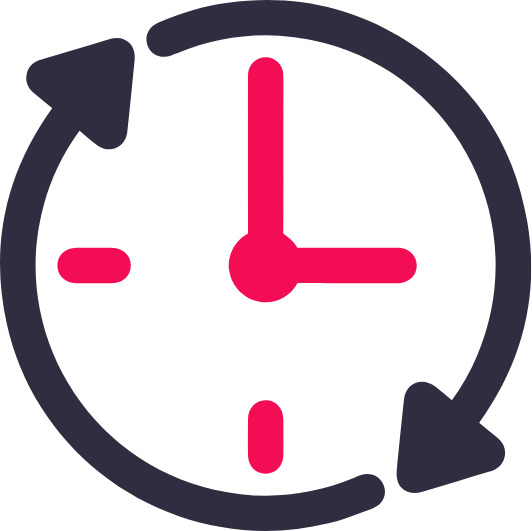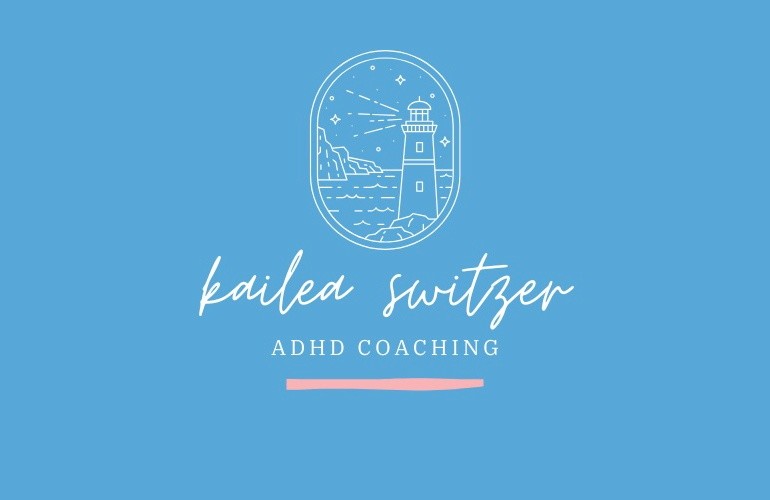2.6.2: Supporting Employees with ADHD: Best Practices for Employers
The presentation of attention deficit hyperactivity disorder (ADHD) varies among people, so when accommodating and providing support, there isn’t a one size fits all approach. The symptoms and severity of ADHD symptoms differ from person to person, but proactively integrating some of the options below into your workplace can have a significant impact.
Proactively communicating that you are OK with staff wearing headphones to help with focus or encouraging staff to hang ‘Working – Please Don’t Disturb’ signs on their doors and desks (and creating a culture that respects these signs), can be very helpful.
This is beneficial because if someone with ADHD is interrupted (ex: by someone stopping by to ask a question), the person can have a very challenging time getting back into their work.
Some people with ADHD benefit from standing desks or treadmill desks, so it is helpful to have these available to request or try out. Providing desk timers and analogue clocks can help employees to ‘make time visible’ as this can be a challenge for people with ADHD. Providing large-scale white boards can help employees with ADHD externalize thoughts, questions and plans and prevent circling thoughts.
In a non-office environment (ex: a restaurant, store, etc.) it can help to provide checklists of tasks and routines that need to be completed for ease of remembering.
This could sound like a manager saying, “It’s OK to get something wrong or make a mistake. I always want you to communicate, no matter what happens, and we know everyone is human. If we look at how to do it differently next time, I’ll always be supportive.”
To counteract feelings of shame and low self-esteem, people with ADHD often need support from other individuals who believe they are a good person and recognize their many strengths. They need to feel that their good intentions are recognized, and that they are being valued and appreciated.
Identify the strengths of your employee with ADHD, and explicitly express appreciation for how those strengths benefit the team. Assign tasks based on their strengths too.
Employees with ADHD are often incredible contributors. When their skills are harnessed and appropriate supports are provided, they can provide immense value to any team.
Provide ongoing education for all staff about ADHD when possible. Many adults are undiagnosed but see themselves in the description and might benefit from these suggested practices. Seeking and truly valuing feedback from employees with ADHD on workplace practices is an important way a company can build an accepting and supportive workplace.3
Environmental Considerations:
People with ADHD may not function best in an open concept workplace. Having quiet or private workspaces (if possible, with a door that can be closed) can be very helpful, or a peaceful place to take a break.Proactively communicating that you are OK with staff wearing headphones to help with focus or encouraging staff to hang ‘Working – Please Don’t Disturb’ signs on their doors and desks (and creating a culture that respects these signs), can be very helpful.

This is beneficial because if someone with ADHD is interrupted (ex: by someone stopping by to ask a question), the person can have a very challenging time getting back into their work.
Some people with ADHD benefit from standing desks or treadmill desks, so it is helpful to have these available to request or try out. Providing desk timers and analogue clocks can help employees to ‘make time visible’ as this can be a challenge for people with ADHD. Providing large-scale white boards can help employees with ADHD externalize thoughts, questions and plans and prevent circling thoughts.
In a non-office environment (ex: a restaurant, store, etc.) it can help to provide checklists of tasks and routines that need to be completed for ease of remembering.
Time Blocking:
It can help to encourage employees with ADHD to regularly “time block” meetings with themselves in their calendars as focused work time for important tasks that require deeper focus. Another supportive strategy is to provide regular company-wide “distraction-free work blocks” where meetings will not be booked.Promoting Movement:
Movement breaks help people with ADHD create momentum and can increase ease with task initiation. Workplaces can proactively recommend that employees take walk or stretch breaks and can explicitly encourage people to take exercise breaks midday (ex: lunchtime yoga class), which can increase job performance, focus and overall regulation. The more people in leadership model this behaviour, the easier it is for employees to partake comfortably.Flexible Hours:
 Providing flexible working hours can support people with ADHD because it allows the possibility to intentionally align peak energy and performance hours to their workday.
Providing flexible working hours can support people with ADHD because it allows the possibility to intentionally align peak energy and performance hours to their workday.
Some people with ADHD struggle with early morning starts, so allowing for a later workday can allow for maximum performance (and if exercising is allowed midday, then allowing to stretch the workday to accommodate this break can be very supportive). Others may prefer to start early before most people come to the workplace to minimize distractions. When possible, allowing the option to work from home can also assist employees with ADHD to make headway on tasks that require increased focus and minimal interruptions.
Communication:
When it comes to communicating information to employees with ADHD, put all expectations in writing as clearly as possible. People with ADHD can have difficulty retaining information that is relayed verbally, so providing a written record can help. Providing pre-meeting agendas and meeting notes is a good practice. When sharing information, give time to allow the employee to immediately capture it somewhere safe.1Deadlines:
With ADHD, providing clear deadlines is helpful, in addition to providing short-term progress check-ins along the way. For example, if a report is due in two months, it would be helpful to create a workback plan with the employee consisting of eight mini steps to complete the report, and a weekly check-in to support progress and troubleshoot any blocks.Managing Employees with ADHD:
If you manage someone with ADHD, it is a good idea to ask them how much direction they find most helpful. Some people with ADHD prefer to be given space to figure things out independently, while others may benefit from a more hands-on approach. That could look like:- Help your employee create a Macro List with all the different priorities they are balancing, organized by categories. This list is not intended as a ‘to-do list,’ but instead a safe ‘storage locker’ to externalize and reduce cognitive load and help the employee prioritize. Sometimes people with ADHD can so clearly see the big picture and everything that needs to happen, that they can struggle to break it down into smaller priorities. Getting explicit permission of what constitutes ‘the main things’ can really help. Also, many people with ADHD fear being perceived as lazy, sloppy, or not doing enough, so the instinct can be to overcompensate and do too much. The explicit support with making the decisions of what to focus on helps break this cycle.
- Each week, help your employee establish clear Weekly Priorities - outline specifically what tasks or priorities need to be focused on that week (e.g.: helping an employee write down a “Big 10” list of their top weekly priorities that they can keep visible and check off). External accountability is often very supporting in propelling action.
- Quick daily check-ins where you help your employee set a few clear targets for the AM and then a few more for the PM. This strategy works because it provides accountability and short-term, manageable targets prevent overwhelm. Open dialogue on a daily basis will be far more effective than a weekly or monthly report update.
ADHD Coaching:
If providing the above support is beyond a manager’s capacity, then the workplace could consider hiring an ADHD Coach to help support the employee in learning and becoming confident in using the above strategies.Other Tips:
- People with ADHD can intensely fear others perceiving them as lazy, stupid, or having missed something they shouldn’t have. As a result, they can avoid asking questions of clarification or sharing their mistakes. It can help to normalize that you value rough drafts and answering questions, and that you aren’t expecting perfection. It can also help to explicitly state that you would rather an employee come forward when they are unsure or if they make a mistake, because open communication fosters trust (and share personal examples, if possible, to normalize this).
- If a task is really blocked (e.g.: paperwork, cleaning, etc.) sometimes getting started together can help move through the block. This could look like saying, “I’ll set a five-minute timer for you to get any ideas down you can and then we can discuss them” or “I’ll capture your thoughts for you while you talk out loud about your ideas.”
- It can help to create checklists, templates, or charts of frequently performed tasks.
- Encourage employees with ADHD to balance types of tasks throughout day. For example, menial non-urgent tasks require a large expenditure of emotional energy so they should be done in moderation and balanced with more creative or engaging tasks.
- Gamify mundane tasks when possible (or encourage employees to share any ‘gamification strategies’ they can create with one another).
Understanding Rejection Sensitive Dysphoria:
Rejection Sensitive Dysphoria (RSD) is an intense reaction to rejection or criticism and results in overwhelming physical symptoms and causes the person to be flooded with stress hormones2. People with ADHD often experience RSD and require a culture of safety where it is explicitly communicated that it is OK to make mistakes.This could sound like a manager saying, “It’s OK to get something wrong or make a mistake. I always want you to communicate, no matter what happens, and we know everyone is human. If we look at how to do it differently next time, I’ll always be supportive.”
To counteract feelings of shame and low self-esteem, people with ADHD often need support from other individuals who believe they are a good person and recognize their many strengths. They need to feel that their good intentions are recognized, and that they are being valued and appreciated.
Identify the strengths of your employee with ADHD, and explicitly express appreciation for how those strengths benefit the team. Assign tasks based on their strengths too.
Employees with ADHD are often incredible contributors. When their skills are harnessed and appropriate supports are provided, they can provide immense value to any team.
Provide ongoing education for all staff about ADHD when possible. Many adults are undiagnosed but see themselves in the description and might benefit from these suggested practices. Seeking and truly valuing feedback from employees with ADHD on workplace practices is an important way a company can build an accepting and supportive workplace.3
Sources
1 Centre for ADHD Awareness Canada. (n.d.). Workplace accommodations. Retrieved from https://caddac.ca/wp-content/uploads/Workplace-accomodations-Chart-FINAL.pdf
2 Doyle, N. (2022, April 25). Rejection sensitive dysphoria in the workplace. Forbes. Retrieved from https://www.forbes.com/sites/drnancydoyle/2022/04/25/rejection-sensitive-dysphoria-in-the-workplace/
3 ADDitude. (n.d.). Inclusion in the workplace: Features invisible disabilities, ADHD. Retrieved from https://www.additudemag.com/inclusion-in-the-workplace-features-invisible-disabilities-adhd/
2 Doyle, N. (2022, April 25). Rejection sensitive dysphoria in the workplace. Forbes. Retrieved from https://www.forbes.com/sites/drnancydoyle/2022/04/25/rejection-sensitive-dysphoria-in-the-workplace/
3 ADDitude. (n.d.). Inclusion in the workplace: Features invisible disabilities, ADHD. Retrieved from https://www.additudemag.com/inclusion-in-the-workplace-features-invisible-disabilities-adhd/
Disclaimer:
Hire for Talent has made every effort to use the most respectful words possible while writing these materials. We realize, however, that the most appropriate terminology may change over time. We developed these materials with the intent to respect the dignity and inherent rights of all individual.
Hire for Talent has made every effort to use the most respectful words possible while writing these materials. We realize, however, that the most appropriate terminology may change over time. We developed these materials with the intent to respect the dignity and inherent rights of all individual.
This tool was developed in collaboration with




